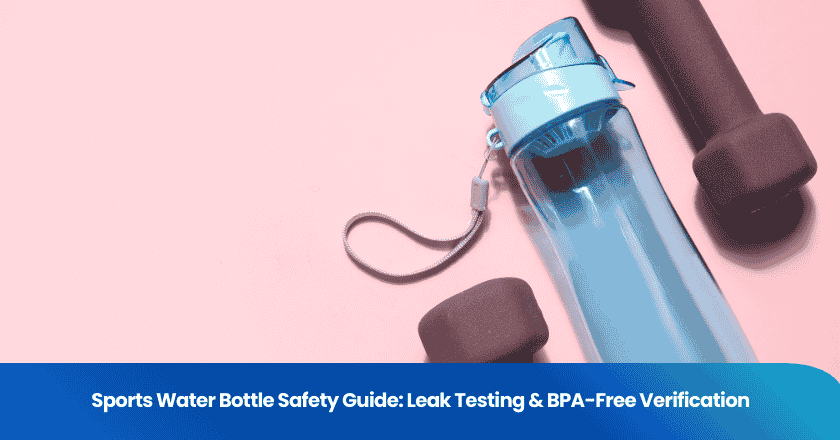
Quality assurance and compliance set the foundation for operational excellence in 2025. Quality assurance focuses on building processes that deliver consistent quality, while compliance ensures organizations meet legal and regulatory requirements. In today’s fast-paced environment, the urgency for robust quality assurance and compliance grows. These practices drive improvements in product quality, protect stakeholders, and help organizations adapt to shifting standards. Customers expect higher quality, and industries recognize that quality assurance and compliance enhance trust and reduce risk.
Key Takeaways
- Quality assurance builds strong processes to prevent defects and ensure consistent quality in products and services.
- Compliance means following laws and regulations to keep organizations safe from legal risks and protect their reputation.
- Combining quality assurance and quality control helps organizations deliver high-quality products and meet customer expectations.
- Using clear documentation, regular training, audits, and technology strengthens quality assurance and keeps teams prepared.
- Embracing digital tools, AI, and global standards helps organizations improve quality faster and stay ahead in a changing world.
Quality Assurance and Compliance Basics
What Is Quality Assurance?
Quality assurance forms the backbone of quality management in modern organizations. It refers to the systematic activities and processes that ensure products or services meet defined requirements and objectives. The quality assurance process focuses on preventing defects by embedding quality into every stage of production or service delivery. Organizations use a quality assurance system to monitor, evaluate, and improve their operations. This approach supports continuous improvement and aligns with quality assurance standards set by industry regulators.
A quality assurance compliance program includes clear documentation, regular training, and ongoing monitoring. For example, in manufacturing, teams use methods such as process audits and statistical sampling to verify that each batch meets quality requirements. In healthcare, quality assurance methods include regular checks on equipment and procedures to ensure patient safety. In the field of quality assurance in software, teams use code reviews and automated testing to maintain high standards.
Tip: Organizations that invest in a robust quality assurance system often see fewer defects, higher customer satisfaction, and improved operational efficiency.
What Is Compliance?
Compliance refers to the act of meeting external requirements set by laws, regulations, or industry standards. It ensures that organizations operate within legal boundaries and adhere to ethical guidelines. Compliance plays a critical role in quality management by holding organizations accountable for their actions and processes.
A quality assurance compliance framework helps organizations track regulatory changes and implement necessary adjustments. For instance, a food processing company must comply with health and safety regulations to protect consumers. In finance, firms must follow strict data protection requirements to safeguard client information. Compliance teams document procedures, conduct regular audits, and provide training to ensure everyone understands their responsibilities.
Note: Compliance is not optional. Failure to meet requirements can result in fines, legal action, or damage to reputation.
Quality Assurance vs Quality Control
The distinction between quality assurance and quality control remains essential in quality management. Quality assurance focuses on building processes that prevent defects and ensure consistent quality. Quality control, on the other hand, involves inspecting and testing products or services to identify and correct defects after they occur.
| Aspect | Quality Assurance | Quality Control |
|---|---|---|
| Focus | Process-oriented | Product-oriented |
| Objective | Prevent defects | Detect and correct defects |
| Timing | Proactive (before production) | Reactive (after production) |
| Methods Used | Audits, process checks | Inspections, testing |
| Responsibility | All staff | Quality control team |
Organizations often use both quality assurance and quality control as part of a comprehensive quality management system. For example, a car manufacturer implements a quality assurance process to design reliable assembly lines and uses quality control to inspect finished vehicles. The combination of these approaches ensures that products meet both internal objectives and external requirements.
Reminder: Understanding quality assurance vs quality control helps organizations allocate resources effectively and achieve high standards of quality.
Quality assurance and compliance work together to create a culture of excellence. By using proven methods used in quality assurance, organizations can meet requirements, exceed customer expectations, and maintain a competitive edge. Quality management relies on a strong foundation of quality assurance compliance, supported by a clear quality assurance system and a dedicated quality control team.
Importance of Quality Assurance in 2025
Risk Reduction and Prevention
Organizations recognize the importance of quality assurance as a primary tool for risk reduction. Quality management systems identify potential issues before they impact operations. Teams use process improvement strategies to monitor activities and address weaknesses. Quality assurance supports regulatory compliance by ensuring that every step meets strict requirements. Regulatory bodies expect companies to maintain high standards and prevent errors. Quality improvement initiatives help organizations avoid costly mistakes and protect stakeholders.
Quality assurance reduces the likelihood of product recalls and service failures. Teams document objectives and requirements to guide daily operations. Regular audits and inspections verify that processes align with regulatory expectations. Employees receive training to understand quality management principles and apply them consistently. This proactive approach strengthens regulatory compliance assurance and minimizes risks.
Customer Trust and Reputation
Quality assurance plays a vital role in building customer trust and reputation. Customers expect products and services to meet their requirements and deliver consistent value. Quality management systems focus on quality improvement to exceed customer expectations. Organizations that prioritize quality demonstrate commitment to customer satisfaction and loyalty. Regulatory compliance further enhances credibility by showing adherence to industry standards.
A strong reputation depends on meeting objectives and maintaining high levels of quality. Teams use feedback and data analysis to drive process improvement and refine operations. Quality improvement efforts lead to fewer complaints and higher retention rates. Companies that invest in quality management gain a competitive advantage in the marketplace.
| Benefit | Impact on Organization | Impact on Customer |
|---|---|---|
| Quality improvement | Increased efficiency | Reliable products/services |
| Regulatory compliance | Reduced legal risk | Confidence in safety |
| Process improvement | Lower operational costs | Enhanced experience |
Regulatory Adherence
Regulatory adherence remains a cornerstone of quality management in 2025. Organizations must comply with evolving regulation and meet all requirements set by regulatory agencies. Quality assurance systems track changes in regulatory standards and update procedures accordingly. Teams conduct regular reviews to ensure ongoing compliance and address gaps in quality improvement.
Regulatory compliance protects organizations from penalties and legal challenges. Quality management teams collaborate with compliance officers to interpret requirements and implement best practices. Documentation and training support regulatory compliance by clarifying objectives and responsibilities. Quality improvement initiatives align with regulatory expectations and drive continuous process improvement.
Note: Regulatory compliance is not static. Organizations must adapt to new requirements and maintain a culture of quality improvement to succeed in a dynamic environment.
Quality Assurance Compliance Systems
Effective quality assurance compliance systems rely on several key components. Organizations that want to achieve high quality must focus on documentation, training, audits, and technology. These elements support a strong quality assurance process and help teams meet both internal and external requirements.
Documentation and Procedures
Clear documentation forms the backbone of any quality assurance system. Teams create detailed procedures that outline every step in the quality management system. These documents guide employees and ensure consistency in daily operations. Well-maintained records also provide evidence of compliance during inspections. Quality assurance best practices recommend regular reviews and updates to documentation. This approach helps organizations adapt to changes in regulations and industry standards.
Training and Engagement
Training ensures that every employee understands their role in maintaining quality. Regular sessions keep staff informed about new procedures and reinforce the importance of quality assurance compliance. Engagement activities, such as workshops or feedback sessions, encourage employees to take ownership of quality. Best practices for quality assurance highlight the value of ongoing education and open communication. When teams feel involved, they contribute to a culture of continuous improvement.
Audits and Monitoring
Audits play a critical role in verifying that processes align with quality assurance and compliance requirements. Internal and external audits identify gaps and highlight areas for improvement. Monitoring tools track performance and detect issues early. A robust quality assurance compliance program uses audit results to drive corrective actions. This cycle of assessment and improvement strengthens the overall quality management system.
Technology in Quality Assurance Systems
Modern quality assurance systems use technology to streamline processes and improve accuracy. Digital platforms store documentation, automate workflows, and support real-time monitoring. Data analytics tools help teams identify trends and make informed decisions. Quality assurance best practices encourage the adoption of technology to enhance efficiency and support compliance. Technology also enables organizations to respond quickly to regulatory changes and maintain high standards of quality.
Tip: Investing in technology and training can transform a quality assurance compliance program and deliver lasting benefits.
Challenges and Solutions
Regulatory Changes
Regulatory shifts present ongoing challenges for organizations in 2025. Teams in food and beverage manufacturing must stay updated on new regulatory requirements. Regulatory bodies frequently revise food safety regulations to address emerging risks. Employees monitor updates and adjust quality procedures to maintain compliance. Companies in food and beverage manufacturing often create dedicated teams to interpret regulatory changes and update documentation. This proactive approach helps organizations avoid penalties and maintain high standards.
Tip: Regular training sessions keep staff informed about regulatory updates and support a culture of compliance.
Resource Constraints
Resource limitations affect many organizations striving for quality. Food and beverage manufacturing facilities may face budget restrictions or staffing shortages. Leaders prioritize essential quality activities, such as audits and process monitoring. Teams use technology to automate routine tasks and maximize efficiency. Managers allocate resources to areas with the greatest impact on quality, such as critical control points in food and beverage manufacturing. This strategy ensures that limited resources support regulatory compliance and continuous improvement.
| Challenge | Solution |
|---|---|
| Limited budget | Automate quality checks |
| Staffing shortages | Cross-train employees |
| Time constraints | Streamline documentation |
Overcoming Resistance
Resistance to change can slow progress in quality initiatives. Employees in food and beverage manufacturing may hesitate to adopt new procedures. Leaders communicate the benefits of quality improvements and regulatory compliance. Teams involve staff in decision-making and encourage feedback. Managers recognize achievements and celebrate milestones to build support. This inclusive approach fosters engagement and reduces resistance.
Practical Strategies
Organizations implement practical strategies to address challenges in quality assurance. Food and beverage manufacturing teams use digital platforms to track regulatory requirements and monitor quality metrics. Leaders schedule regular audits and review processes for gaps. Employees receive ongoing training focused on food safety regulations and best practices. Teams share success stories to motivate staff and reinforce the value of quality. These strategies help organizations adapt to regulatory changes and maintain excellence.
Trends in Quality Assurance and Compliance
Digital Transformation
Digital transformation shapes the future of quality improvement in 2025. Organizations use cloud-based platforms to manage documentation and monitor processes. Teams access real-time data to identify opportunities for quality improvement. Digital dashboards display key metrics, helping leaders track progress and respond quickly. Employees receive instant feedback, which supports ongoing quality improvement efforts. Digital tools simplify audits and streamline reporting. Companies that embrace digital transformation see faster quality improvement cycles and better compliance outcomes.
Digital transformation encourages collaboration across departments. Teams share insights and best practices, which leads to more effective quality improvement strategies. Leaders use digital records to analyze trends and adjust procedures. This approach supports a culture focused on quality and continuous quality improvement.
AI and Automation
Artificial intelligence and automation drive significant changes in quality improvement. AI systems analyze large volumes of data to detect patterns and predict issues. Automated workflows reduce manual errors and speed up quality improvement processes. Teams use AI-powered tools to monitor compliance and identify gaps in quality improvement. Machine learning models recommend corrective actions, which helps organizations maintain high standards of quality.
AI supports quality improvement by:
- Identifying defects early
- Suggesting process changes
- Automating routine quality checks
Automation frees employees to focus on strategic quality improvement initiatives. Leaders rely on AI insights to guide decision-making and prioritize quality improvement projects. Organizations that invest in AI and automation achieve more consistent quality and stronger compliance.
Global Standards
Global standards influence quality improvement across industries. Regulatory agencies update requirements to reflect international best practices. Organizations align their quality improvement systems with global standards to ensure consistency. Teams study new guidelines and adjust procedures for quality improvement. Compliance with global standards demonstrates commitment to quality and builds trust with stakeholders.
| Global Standard | Area of Impact | Role in Quality Improvement |
|---|---|---|
| ISO 9001 | Quality management | Sets benchmarks for quality improvement |
| HACCP | Food safety | Guides risk-based quality improvement |
| GDPR | Data protection | Ensures privacy-focused quality improvement |
Global standards encourage organizations to pursue continuous quality improvement. Teams collaborate with international partners to share knowledge and refine quality improvement strategies. Adopting global standards supports long-term quality improvement and regulatory compliance.
Quality assurance and compliance drive success in 2025. Organizations strengthen processes, reduce risks, and build trust. Teams adapt to new regulations and embrace technology.
Continuous improvement remains essential.
To improve quality assurance compliance:
- Review procedures regularly
- Invest in employee training
- Monitor performance with digital tools
Leaders encourage ongoing learning. Teams stay informed and seek new strategies for excellence.
FAQ
What is the difference between quality assurance and compliance?
Quality assurance focuses on building processes that deliver consistent quality. Compliance ensures organizations meet legal and regulatory requirements. Both work together to maintain high standards and protect stakeholders.
How often should organizations conduct quality audits?
Organizations should schedule quality audits at least once a year. Some industries require more frequent audits based on regulatory guidelines or risk assessments. Regular audits help teams identify gaps and improve processes.
Why is employee training important in quality assurance?
Employee training ensures everyone understands their role in maintaining quality. Well-trained staff follow procedures correctly and contribute to continuous improvement. Training also helps organizations adapt to new regulations and technologies.
How does technology improve quality assurance systems?
Technology automates routine tasks, stores documentation, and supports real-time monitoring. Digital tools help teams analyze data, identify trends, and respond quickly to issues. Technology increases efficiency and accuracy in quality management.
What are global standards in quality assurance?
Global standards, such as ISO 9001 and HACCP, set benchmarks for quality management. Organizations align their systems with these standards to ensure consistency and build trust with stakeholders. Compliance with global standards supports international business operations.
Grow your business with TradeAider Service
Click the button below to directly enter the TradeAider Service System. The simple steps from booking and payment to receiving reports are easy to operate.



